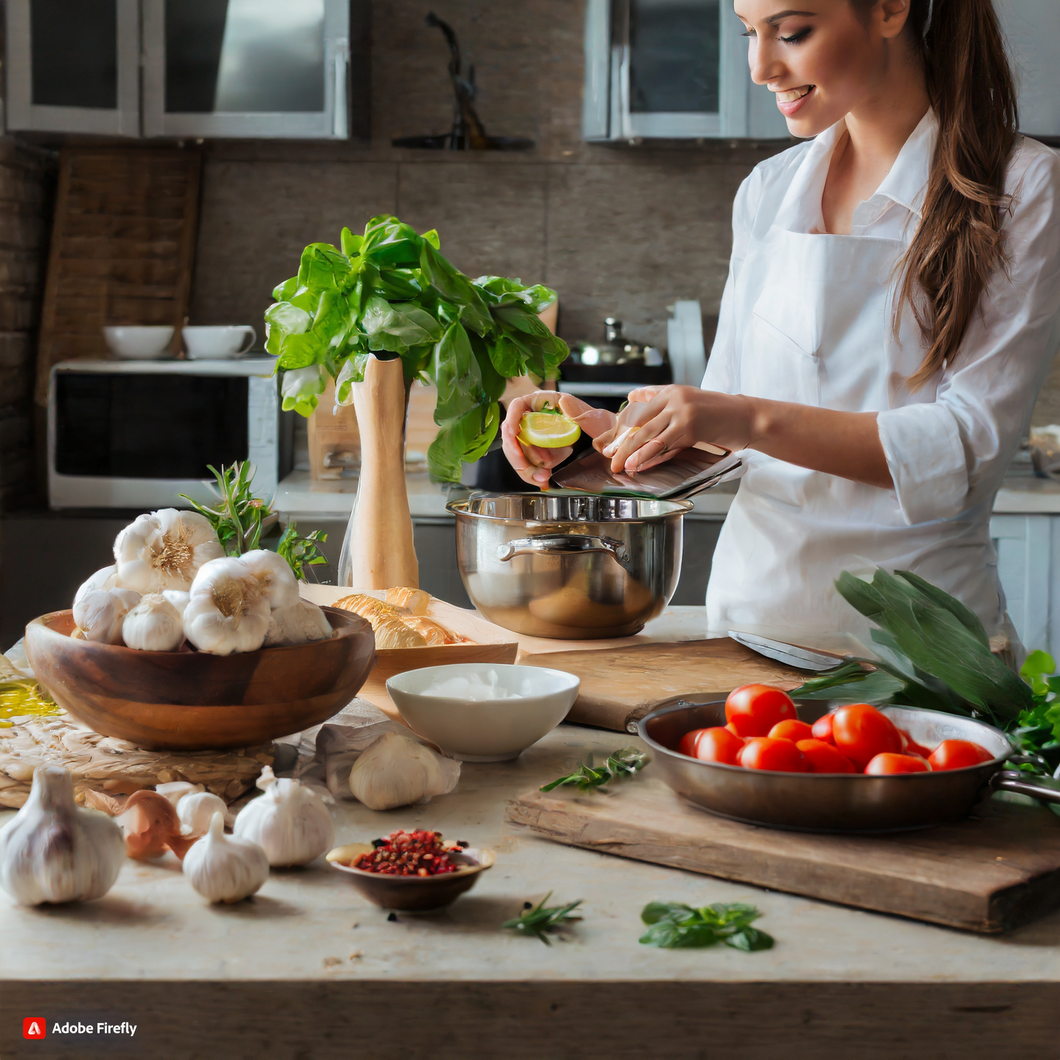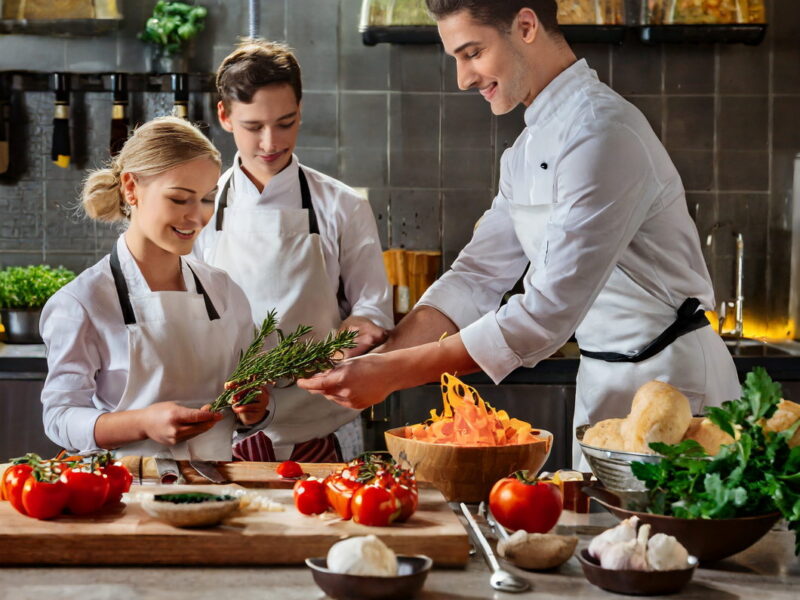Introduction
Foundations of Flavorful Cooking: Culinary Essentials is a comprehensive guide to understanding the fundamental principles of cooking and how to create delicious and flavorful dishes. This course covers everything from basic cooking techniques and flavor profiles to ingredient selection and recipe development.
Whether you are a beginner cook or an experienced chef, this course will provide you with the essential knowledge and skills to elevate your cooking to the next level. With a focus on using fresh, high-quality ingredients and mastering the art of seasoning and flavoring, Foundations of Flavorful Cooking is the perfect starting point for anyone looking to improve their culinary skills and create mouth-watering meals.
The Importance of Using Fresh Ingredients in Flavorful Cooking
When it comes to cooking, there are a few key elements that can make or break a dish. From the right amount of seasoning to the perfect cooking technique, every step plays a crucial role in creating a flavorful meal. However, one aspect that often gets overlooked is the use of fresh ingredients. In this article, we will explore the importance of using fresh ingredients in flavorful cooking and how it can elevate your dishes to the next level.
First and foremost, using fresh ingredients is essential for achieving the best flavor in your dishes. Fresh produce, meats, and herbs are bursting with natural flavors that can enhance the taste of your food. On the other hand, using canned or frozen ingredients can result in a dull and lackluster taste. This is because these ingredients have been processed and may contain preservatives, which can alter their natural taste. By using fresh ingredients, you are allowing the true flavors to shine through in your cooking.

Not only do fresh ingredients provide better flavor, but they also offer more nutritional value. Fruits and vegetables lose their nutrients over time, so using them when they are fresh ensures that you are getting the most out of them. This is especially important for those who are health-conscious and want to make sure they are getting all the necessary vitamins and minerals from their food. By incorporating fresh ingredients into your cooking, you are not only making your dishes more flavorful but also more nutritious.
Another benefit of using fresh ingredients is that it allows for more creativity in the kitchen. When you have a variety of fresh ingredients at your disposal, you can experiment with different flavor combinations and create unique dishes. Fresh herbs, for example, can add a burst of flavor to any dish and can be used in a variety of ways. From adding them to marinades to using them as a garnish, fresh herbs can take your cooking to the next level. By using fresh ingredients, you are not only elevating the taste of your dishes but also expanding your culinary skills.
In addition to flavor and nutrition, using fresh ingredients also supports local farmers and the community. When you buy fresh produce from local farmers’ markets or directly from the source, you are not only getting the freshest ingredients, but you are also supporting small businesses. This helps to boost the local economy and creates a sense of community. Furthermore, buying locally grown produce means that the ingredients have not traveled long distances, reducing the carbon footprint and promoting sustainability.
Now, you may be thinking that using fresh ingredients can be expensive and time-consuming. While it is true that fresh ingredients may cost a bit more than their processed counterparts, the benefits far outweigh the cost. Plus, with a little planning and organization, using fresh ingredients can be just as convenient as using canned or frozen ones. You can buy in bulk and freeze certain ingredients for later use, or you can meal prep and have everything ready to go when it’s time to cook.
In conclusion, using fresh ingredients is a crucial aspect of flavorful cooking. Not only do they provide better taste and nutrition, but they also allow for more creativity in the kitchen and support the local community. So the next time you’re planning a meal, remember to choose fresh ingredients and watch as your dishes come to life with flavor. Your taste buds and your body will thank you.
Exploring Different Spices and Herbs for Enhanced Flavor in Your Dishes
Are you tired of cooking the same bland meals every day? Do you want to take your dishes to the next level and impress your family and friends with your culinary skills? Look no further, because in this article, we will be exploring the foundations of flavorful cooking by delving into the world of spices and herbs.
Spices and herbs are essential ingredients in any kitchen. They not only add flavor and aroma to dishes but also have numerous health benefits. From boosting the immune system to aiding digestion, these flavorful additions can elevate your cooking in more ways than one.
Let’s start with the basics – what exactly are spices and herbs? Spices are derived from the seeds, roots, bark, or fruits of plants, while herbs come from the leaves of plants. Both are used to enhance the taste of food, but they differ in terms of potency and usage. Spices tend to have a stronger flavor and are used in smaller quantities, while herbs have a milder taste and can be used in larger amounts.
Now that we have a better understanding of spices and herbs, let’s explore some of the most commonly used ones in cooking.
First on the list is the versatile and widely used spice – black pepper. This spice adds a subtle heat and depth of flavor to dishes. It pairs well with almost any savory dish, from meats to vegetables. For maximum flavor, it is best to use freshly ground black pepper instead of pre-ground ones.
Next up, we have the aromatic and earthy spice – cumin. This spice is commonly used in Indian, Mexican, and Middle Eastern cuisines. It adds a warm and nutty flavor to dishes and is often used in spice blends such as curry powder and garam masala. Cumin is also known for its digestive properties, making it a great addition to dishes that may be heavy on the stomach.
Moving on to herbs, we have the classic – basil. This herb is a staple in Italian cuisine and is often used in dishes such as pasta, pizza, and pesto. It has a sweet and slightly peppery flavor that pairs well with tomatoes and garlic. Basil is also known for its anti-inflammatory properties, making it a healthy addition to your meals.
Another popular herb is rosemary, known for its distinct pine-like aroma and flavor. It is commonly used in Mediterranean dishes and pairs well with meats, potatoes, and roasted vegetables. Rosemary is also believed to improve memory and concentration, making it a great herb to incorporate into your diet.
Last but not least, we have the vibrant and fragrant herb – cilantro. This herb is commonly used in Mexican, Thai, and Indian cuisines. It has a citrusy and slightly peppery taste that adds a burst of freshness to dishes. Cilantro is also rich in antioxidants and has anti-inflammatory properties, making it a healthy addition to any meal.
These are just a few of the many spices and herbs that can enhance the flavor of your dishes. Experimenting with different combinations of spices and herbs can take your cooking to new heights. Don’t be afraid to try new flavors and get creative in the kitchen.
When using spices and herbs, it is important to keep in mind that a little goes a long way. It is best to start with small amounts and adjust according to your taste. Also, make sure to store them properly in airtight containers away from heat and moisture to maintain their freshness and potency.
In conclusion, spices and herbs are the building blocks of flavorful cooking. They not only add taste and aroma to dishes but also have numerous health benefits. So next time you’re in the kitchen, don’t be afraid to spice things up and explore the world of flavors. Your taste buds (and your loved ones) will thank you. Happy cooking!
Mastering Basic Cooking Techniques for Building Flavor Profiles in Your Meals
Are you tired of bland and boring meals? Do you want to take your cooking to the next level and impress your family and friends with delicious and flavorful dishes? Look no further, because in this article, we will be discussing the foundations of flavorful cooking and the essential techniques that will help you build flavor profiles in your meals.
First and foremost, let’s talk about the importance of using fresh and high-quality ingredients. No matter how skilled you are in the kitchen, if your ingredients are not fresh and of good quality, your dish will not reach its full potential. So, always make sure to use the freshest produce, meats, and spices when cooking. Read easy Healthy Lunch for Weight Loss.
Next, let’s dive into the essential techniques that will help you build flavor profiles in your meals. The first technique is seasoning. Seasoning is the process of adding salt, pepper, and other spices to your dish to enhance its flavor. It is crucial to season your food at every stage of the cooking process, from marinating to the final seasoning before serving. This will ensure that your dish has a well-balanced and robust flavor.

Another important technique is searing. Searing is the process of browning the surface of meat or vegetables over high heat. This not only adds color to your dish but also creates a caramelized crust that adds depth and complexity to the flavor. To achieve a perfect sear, make sure your pan is hot before adding the meat or vegetables, and do not overcrowd the pan.
Next up, we have caramelization. Caramelization is the process of browning sugars in food, resulting in a rich and sweet flavor. This technique is commonly used in dishes such as caramelized onions, roasted vegetables, and even meats. To achieve caramelization, make sure to cook your food over medium to high heat and avoid stirring too often. Read Healthy Dessert Recipes.
Moving on to braising, which is a cooking method that involves cooking food in a small amount of liquid over low heat for an extended period. This technique is perfect for tougher cuts of meat as it helps to break down the fibers and results in a tender and flavorful dish. The key to a successful braise is to use a flavorful liquid such as broth, wine, or even beer, and to cook the dish slowly over low heat.
Another essential technique for building flavor profiles is deglazing. Deglazing is the process of adding liquid to a pan to loosen the browned bits of food stuck to the bottom. These browned bits, also known as fond, are full of flavor and can be used to create a delicious sauce or gravy. To deglaze a pan, simply add a liquid such as broth, wine, or even water, and use a wooden spoon to scrape off the fond.

Last but not least, we have the technique of layering flavors. Layering flavors is the process of adding different ingredients and seasonings at different stages of the cooking process to create a complex and well-rounded flavor profile. For example, adding herbs and spices at the beginning of cooking will infuse the dish with their flavors, while adding them towards the end will give a more pronounced taste.
In conclusion, mastering these basic cooking techniques will help you build flavorful and delicious meals. Remember to always use fresh and high-quality ingredients, season your food at every stage, and experiment with different techniques to create unique and tasty dishes. With practice and patience, you will soon become a master of flavor in the kitchen. Happy cooking!
Q&A – Flavorful Essentials
1) What are some key ingredients that are Flavorful Essentials cooking?
Some key ingredients that are essential for flavorful cooking include herbs and spices, aromatics such as onions and garlic, and high-quality fats like olive oil or butter.
2) How can one enhance the flavor of a dish without adding too much salt?
One can enhance the flavor of a dish without adding too much salt by using alternative seasonings such as citrus juice, vinegar, or herbs and spices. Additionally, cooking techniques like roasting or grilling can also bring out natural flavors without relying on salt.
3) Why is it important to balance flavors in a dish?
Balancing flavors in a dish is important because it creates a harmonious and well-rounded taste experience. Too much of one flavor can overpower the others and make the dish unenjoyable. By balancing flavors, each ingredient can shine and contribute to the overall deliciousness of the dish.
Conclusion for Flavorful Essentials
In conclusion for Flavorful Essentials, the foundations of flavorful cooking are essential for any aspiring chef or home cook. These culinary essentials include understanding flavor profiles, proper seasoning techniques, and cooking methods. By mastering these foundations, one can elevate their dishes and create delicious and well-balanced meals. Additionally, having a strong foundation in cooking allows for creativity and experimentation in the kitchen. With practice and knowledge of these essentials, anyone can become a skilled and flavorful cook.
Please follow us on linkedin. You can learn all best canadian food recipes you can check our Culinary 1TouchFood Youtube and Telegram 1TouchFood page. Don’t forget Fighting Obesity Magazine and Radio Cooking.

